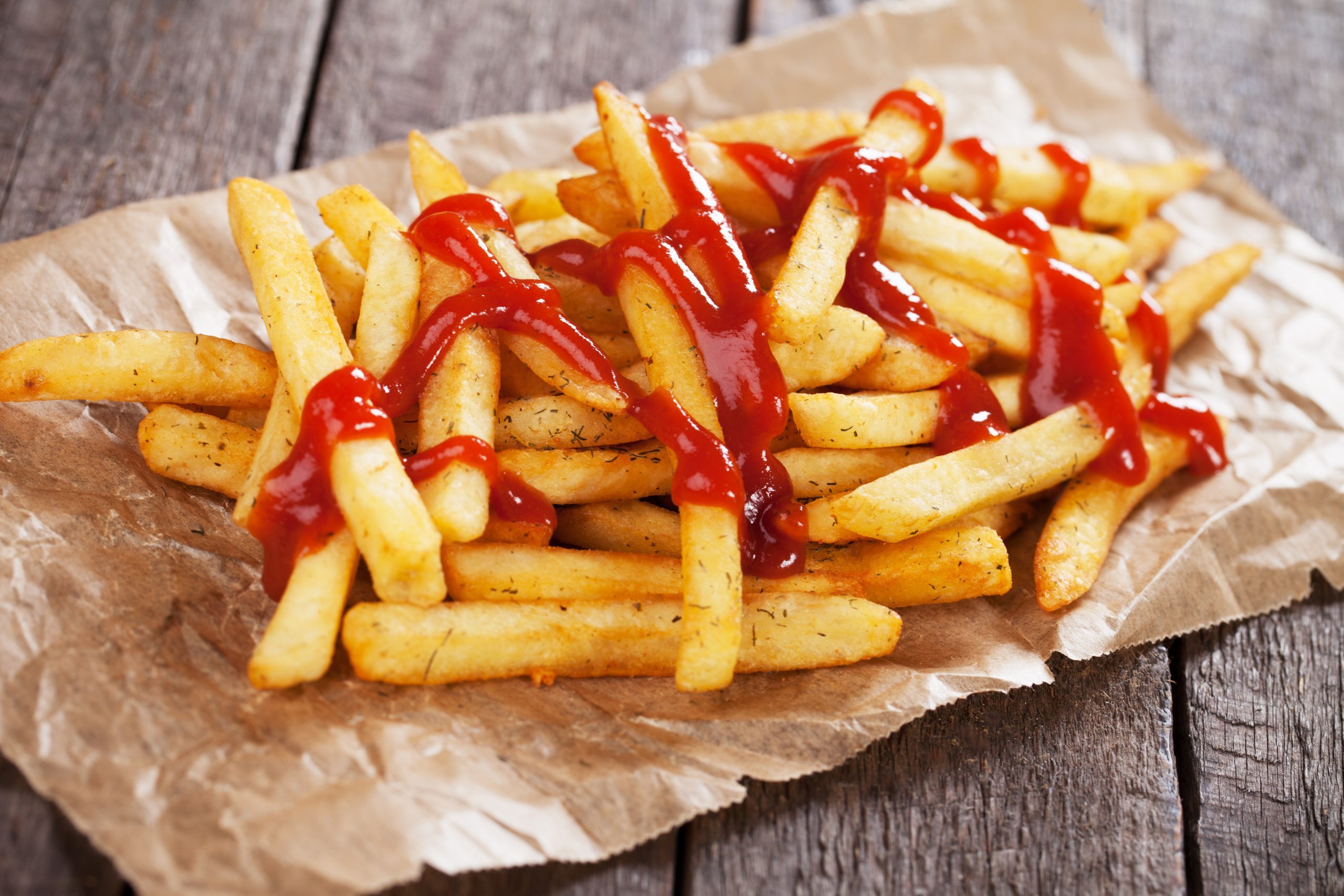When you order fries, you get a side of ketchup. But how did the pairing first start, and why?

Here’s Why We Put Ketchup on French Fries

We sure do love ketchup here in the United States. The average American is expected to consume more than a gallon of ketchup in 2025, according to Statista. And why not? Ketchup delivers that perfect sweet-and-salty tang, makes just about any food more appetizing—and you can even clean with ketchup!
Ketchup gets along great with burgers, but it’s BFFs with french fries. So why do we eat fries with ketchup, and what is the great “ketchup on fries” debate? Keep reading for the dish on this delicious duo.
Get Reader’s Digest’s Read Up newsletter for more food news, grammar, humor, travel, tech and fun facts all week long.
When was ketchup invented?
The ketchup story goes back thousands of years, but in a completely different form. The earliest version was a Chinese fermented fish sauce called kê-tsiap, and it contained no tomatoes at all! Doesn’t sound as appetizing as today’s condiment, does it?
The sauce spread along the Southeast Asian trade routes and eventually made its way back to England via the British merchants. In England, the term ketchup came to be used for any salty fermented or brined sauce—the ingredients might include oysters, mushrooms, walnuts or even peaches.
It wasn’t until the late 1700s that red, tomato-based ketchup began to appear, when British colonists in America began experimenting with the “love apple,” their name at the time for tomatoes.
The turning point came in 1906, when the Heinz family began bottling preservative-free ketchup made from pickled tomatoes pureed with vinegar. This allowed ketchup to be mass-produced for the first time, which is when it really started making its way to dinner tables (and refrigerators) across the United States.
How did we eat French fries before ketchup?
French fries may be called “French,” but their origin is widely credited to Belgium, where people have been enjoying deep-fried potatoes since at least the late 1700s. In Belgium, the traditional accompaniment is mayonnaise.
When fries made their way onto the scene in Europe in the early 1800s, tomato ketchup had not been invented yet. Americans embraced the spuds fried in beef tallow, then dipped in the pan drippings or with salt and vinegar.
How did ketchup and fries get together?

There are reports of early adopters dipping their fries in ketchup from as early as the late 1800s. But the pairing didn’t take off in America until the middle of the 20th century, with the rise of fast food and the wide availability of frozen french fries. Restaurants like McDonalds standardized the combo by serving fries with a side of ketchup. Since then, ketchup and fries have been inseparable.
So what’s the great “ketchup on fries” debate?
The “ketchup on fries” debate centers around whether you should drizzle ketchup directly onto your french fries or dip them into a side of the red stuff. Some diners prefer the even distribution and experience of topping the taters with ketchup. Others opt for the precise control of dipping a fry or two at a time, which keeps the crispy potatoes from getting soggy.
The ketchup on fries debate also touches on the perceived quality of the french fries. Some diners believe that good-quality fries don’t need any ketchup at all. Others, of course, believe that hot crispy fries are the perfect vehicle for ketchup.
So enjoy your next order of french fries, whether you like them smothered with ketchup, dipped in ketchup (or mayo or another condiment) or all on their own. I know I will.
Why trust us
At Reader’s Digest, we’re committed to producing high-quality content by writers with expertise and experience in their field in consultation with relevant, qualified experts. We rely on reputable primary sources, including government and professional organizations and academic institutions as well as our writers’ personal experiences where appropriate. We verify all facts and data, back them with credible sourcing and revisit them over time to ensure they remain accurate and up to date. Read more about our team, our contributors and our editorial policies.
Sources:
- History.com: “The Surprisingly Ancient History of Ketchup”
- Statista: “Tomato Ketchup – United States”




















